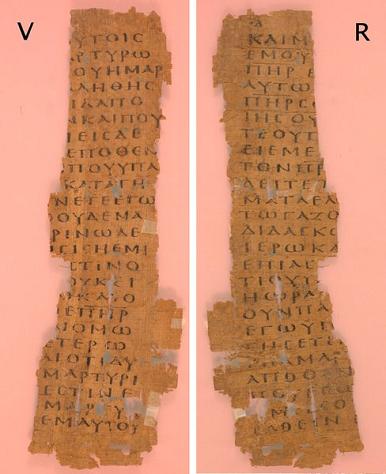| Change to Book/Chapter View |
|
|
|
Translation process is ongoing. For current status see details |
|
|

Papyrus 39 Discovered: Oxyrhynchus, Egypt Location: Rochester, New York; Colgate Rochester Divinity School, Ambrose Swasey Library Contents: John 8:14-22 Notes: Large letters and beautiful calligraphy indicate this was probably written for a church.
John 8 14 Jesus answered them, “Even if I testify about myself, my testimony is true, for I know where I came from, and where I am going; but you don’t know where I came from, or where I am going. 15 You judge according to the flesh. I judge no one. 16 Even if I do judge, my judgment is true, for I am not alone, with the Father who sent me. 17 It’s also written in your law that the testimony of two people is valid. 18 I am one who testifies about myself, and the Father who sent me testifies about me.” 19 They said therefore to him, “Where is your Father?” Jesus answered, “You
know neither me nor my Father. If
you knew me, you would know my
Father also.” 20 22 The Jews therefore said, “Will he kill himself, because he says, ‘Where I am going, you can’t come’?”
|
How to read these pages: • The
translation to the left is based on the World English Bible. Words in regular
black font are words in the manuscript matching the Majority Text for that
passage. • Words
in italics cannot be seen in the manuscript, since the manuscript is
fragmentary. These words are supplied for readability by the World English
Bible translation. • Words
present in the manuscript but with some letters unreadable or missing are in blue
like this: blue. One Greek word often is
translated into multiple English words, and when this occurs, all the English
words are in blue. • Words
present in the manuscript but with spelling or trivial word order differences that do not affect the
meaning are in green like this: green. • If
the manuscript is different from the Majority Text, words in the Majority
Text that are missing from the text of the manuscript are marked through in red
like this: • If the manuscript is different from the Majority Text, words in the manuscript that are not in the Majority Text are underlined in red like this: new words.If the manuscript differs from the Majority Text yet matches another well-known text, this is noted in the footnotes.
|
